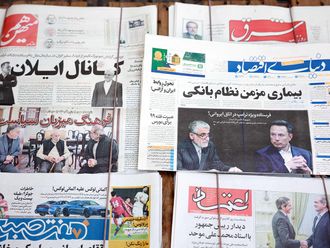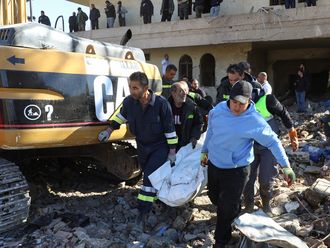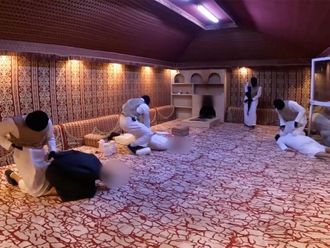Washington: The US said on Wednesday it has not supplied Stinger missiles to Syrian rebel forces and appeared to question Russian assertions that the US-made surface-to-air missiles had made their way into the opposition’s hands.
Stinger missiles could be used against Syrian President Bashar Al Assad’s warplanes and helicopters, which have bombed residential areas where rebels are hiding. More than 32,000 people have been killed in the conflict.
But in contrast to the Libyan crisis last year, the West has shown little appetite to arm the Syrian rebels, worried that weapons would fall into the hands of Islamic militants.
Russia’s top military officer, Nikolai Makarov, said Russia’s military had learned that rebel forces “have portable missile launchers of various states, including American-made Stingers”.
US Defence Secretary Leon Panetta told reporters at the Pentagon that “I certainly don’t know of us providing any such missiles in that area.”
State Department spokeswoman Victoria Nuland said the United States had provided no lethal assistance to rebel forces whatsoever, including Stingers.
“Nor will we,” Nuland said, ruling out future transfers of Stingers.
Asked about the possibility that Stingers reached the rebels through a third party, she said: “If the Russian Federation has evidence of Stingers in the hands of the opposition, we’d like to see it.”
Lessons Learned
After the Soviet Union invaded Afghanistan in 1979, the CIA, with Saudi backing, provided sophisticated shoulder-fired Stinger missiles to Islamic militants seeking to oust Soviet troops.
The missiles played a significant role in the Soviets’ ultimate defeat in Afghanistan. But they also became a major headache for US and other Western counterterrorism agencies when anti-Soviet militants morphed into anti-Western militant factions including Al Qaida.
Aram Nerguizian, a Middle East expert at the Centre for Strategic and International Studies, said US efforts to reclaim loose Stingers after that conflict appear to have helped keep them off the black market.
Stingers are among the types of shoulder-fired, surface-to-air missiles commonly referred to as MANPADs.
“While there’s emerging evidence that you have MANPADs in Syria, there’s far more evidence pointing to an aging mix of Soviet-era systems,” Nerguizian said, casting doubt on the Russian claims.
One potential source of non-US manufactured MANPADs is Libya. Intelligence experts believe that hundreds, if not thousands, of MANPADs were looted from arsenals accumulated by late Libyan leader Colonel Gaddafi, and are available on the Middle East black market.
Opposition activist footage has shown rebels carrying surface-to-air missiles made by the former Soviet Union, but footage of Stingers has yet to appear.
“All of the images that we have seen of MANPADs and MANPAD-like equipment in Syria has been exclusively of a Soviet/Warsaw Pact vintage. The SA-7-type vintage,” Nuland told reporters.
“We have not seen evidence of Stingers.”
Russia, which has supported Assad throughout the conflict, sold his government $1 billion worth of weapons last year and has made clear it would oppose an arms embargo in the UN Security Council.
The question of whether to arm the rebels has become an issue in the US presidential election, with Republican candidate Mitt Romney accusing President Barack Obama of failing to show leadership in this area.
In their debate on Monday, Romney said the United States should work with partners to organise the Syrian opposition and “make sure they have the arms necessary to defend themselves.”
Obama said Romney was wrong to suggest that giving rebels heavy weapons “is a simple proposition that would lead us to be safer over the long term.”












